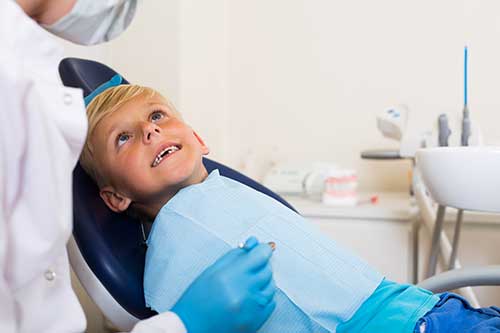9 Easy Facts About Legacy Orthodontics Shown
Table of ContentsThe Best Guide To Legacy OrthodonticsThe 9-Second Trick For Legacy OrthodonticsNot known Facts About Legacy OrthodonticsFascination About Legacy OrthodonticsLegacy Orthodontics Fundamentals Explained
In addition, we provide adjustable therapy schedules, versatile settlement choices and a fun, delightful experience.An orthodontist is a dental practitioner trained to detect, protect against, and treat teeth and jaw irregularities. Orthodontists work with people of all ages, from kids to adults.
Malocclusion, or misaligned teeth, can cause dental problems, consisting of dental caries, periodontal condition, and tough or uncomfortable chewing. Yet not everyone is birthed with straight teeth. If you have a poor bite or huge rooms in between your teeth, you may intend to seek advice from a dentist specializing in orthodontic treatment.
Legacy Orthodontics Things To Know Before You Buy
( Image Credit: DigitalVision/Getty Images) Orthodontists utilize dealt with and removable dental gadgets, like braces, retainers, and bands, to alter the placement of teeth in your mouth. Orthodontic therapy is for dental problems, consisting of: Crooked teethBite problems, like an overbite or an underbiteCrowded teeth or teeth that are as well far apartJaw misalignmentThe goal of orthodontic treatment is to boost your bite.
A healthy bite ensures you can eat, eat, and speak appropriately. While you might consider orthodontists as mostly for kids or young adults that need braces, they can deal with oral issues at any type of age. Orthodontists go to college, oral school, and orthodontic college. After college graduation, they invest 2 or 3 years in an orthodontic residency program.
All orthodontists are dental professionals, however not all dental practitioners are orthodontists. Orthodontic residency programs supply intensive, focused instruction for oral specialists. They concentrate on 2 locations: How to appropriately and safely relocate teeth Just how to correctly direct growth in the teeth, jaw, and faceOnce an orthodontist has completed training, they have the choice to come to be board licensed.
A Biased View of Legacy Orthodontics
Imbalance, or malocclusion, is the most common factor individuals see an orthodontist. It is hereditary and is the result of dimension distinctions in between the upper and lower jaw or in between the jaw and teeth. Malocclusion results in tooth overcrowding, a misshapen jaw, or uneven bite patterns. Malocclusion is usually treated with: Your orthodontist affixes metal, ceramic, or plastic square bonds to your teeth.
If you have only minor malocclusion, you might have the ability to use clear dental braces, called aligners, rather than traditional dental braces (https://giphy.com/channel/legacyortho). Some individuals need a headgear to help relocate teeth right into line with stress from outside the mouth. After dental braces or aligners, you'll need to wear a retainer. A retainer is a personalized device that keeps your teeth in area.
They're most often made use of on youngsters. They can develop extra area in the mouth without having to draw teeth. If you have a significant underbite or overbite, you may need orthognathic surgical procedure (also called orthodontic surgery) to lengthen or reduce your jaw. Orthodontists utilize cords, medical screws, or plates to sustain your jaw bone.
You might need to see an orthodontist if you have: Crowding or not adequate room for every one of your teethOverbite, when your top teeth come by your bottom teethUnderbite, when your base teeth are also much forwardSpacing or problems with gapsCrossbite, which is when page your upper teeth fit behind your bottom teeth when your mouth is closedOpen bite or an upright void between your front base and top teethMisplaced midline, when the facility of your base and upper teeth don't align Correcting a dental malocclusion can: Make biting, eating, and speaking easierImprove the proportion of our face and your general appearanceEase pain from temporomandibular joint problemsSeparate your teeth and make them less complicated to clean, aiding avoid dental caries or cavities It's typically a dental expert who first notices misaligned teeth throughout a routine test.
How Legacy Orthodontics can Save You Time, Stress, and Money.

Throughout your very first orthodontic appointment, you'll likely have: An oral examPhotos taken of your face and smileDental X-raysPanoramic (360 degree) X-rays of your face and headImpressions to create molds of your teethThese tests will assist your orthodontist know just how to wage your therapy. clear braces. An orthodontist is a dental practitioner that's had training to treat your teeth and jaw
Orthodontists may do surgical treatment, exams,X-rays,and even more to aid you acquire an extra comfy, much healthier smile. An orthodontist is focused on your bite, so something like a chipped tooth would certainly be taken care of by a dental practitioner. Orthodontists are dental practitioners but not all dental practitioners are orthodontists. Orthodontists are focused on your bite, or the way your teeth meshed, and the straightness of your teeth.
Ever before asked yourself exactly how celebrities always appear to have perfectly straightened teeth? The solution frequently depends on the proficient hands of an orthodontist. However exactly what does an orthodontist do? Orthodontists are dental specialists who focus on correcting irregularities in the teeth and jaws. Their know-how exceeds simply producing a gorgeous smile; it reaches boosting your overall oral health and function.
The Legacy Orthodontics Statements

While dental braces are the most generally identified orthodontic therapy, orthodontists have a diverse toolkit at their disposal. The certain strategy picked depends on the severity of the case, the client's age, and specific choices. These tried-and-true braces use a system of brackets adhered to the teeth and linked by cables.
Clear aligners, like Invisalign, are a preferred option for patients looking for an extra very discreet treatment alternative. These detachable trays are customized to progressively change the teeth's placement. Headgear may be used in combination with dental braces or aligners to apply additional targeted pressures, especially for fixing jaw discrepancies. In instances of narrow jaws, palatal expanders can be used to create space for correct tooth placement.